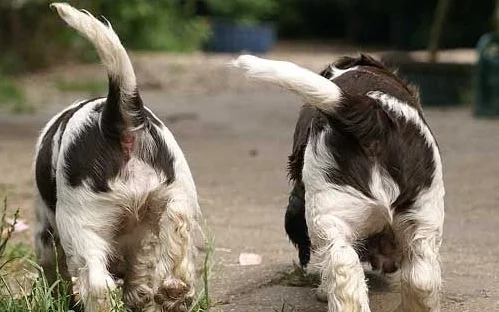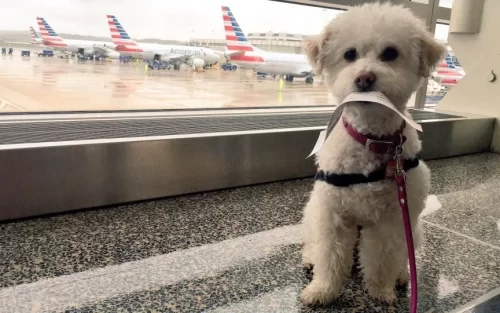We all know that dogs have incredible senses. Their ability to pick up scents and sounds far surpasses our own. It’s what makes them such loyal companions and, in many cases, great protectors. But this keen sensitivity can sometimes become a source of anxiety, particularly when it comes to the mighty rumble of thunderstorms.
It can be heartbreaking to see our four-legged pals in distress, shivering at the crash of thunder, or whimpering at the flash of lightning. Dogs may have evolved alongside us for thousands of years, but they are still creatures of instinct, and these loud, unpredictable sounds can trigger their most primal fears.
The Role of the Pet Parent
But as a pet parent, what can you do? Should you hug them? Play music? Distract them with a game? It’s a situation that can leave you feeling helpless. But here’s the good news: you’re not powerless. There’s a whole arsenal of strategies you can deploy to help soothe your pet’s storm-related anxiety.
So if you’ve ever found yourself clutching a trembling pup during a late-night lightning display, this guide is for you. We’re going to delve into why thunderstorms can be so unsettling for dogs and explore practical tips and strategies to help your furry friend stay calm, even during the most boisterous storms. With patience, understanding, and a bit of know-how, you can help your pet navigate stormy weather with ease.
Understanding the Fear: Why Thunderstorms Spook Our Pooches
So, why do some dogs react to thunderstorms as if they’re auditioning for a role in a horror movie? It’s more than just the loud noises. While the sudden, jarring sounds of thunder can undoubtedly be unsettling for dogs, there’s a whole lot more going on that can ramp up their anxiety.
Firstly, it’s important to remember that our furry friends are far more perceptive than us when it comes to detecting changes in their environment. For example, dogs can sense shifts in barometric pressure, which often precede a storm. Just imagine being able to feel the weight of the air changing around you – that’s likely pretty confusing for our canine companions.
There’s Something in the Air
On top of this, dogs can pick up on the increase in static electricity that comes with a storm. You’ve probably experienced static electricity yourself if you’ve ever had a nasty shock from touching a metal object. Now, imagine feeling that static build-up in your fur. It’s not hard to see why this could be uncomfortable for dogs. In fact, some experts suggest that dogs often retreat to bathtubs during storms because the porcelain can help to insulate them against these uncomfortable static shocks.
But that’s not all. Dogs also have a keen sense of smell, far superior to our own. They can detect the scent of rain and ozone in the air, further alerting them to incoming bad weather.
When you put all of this together, you can start to understand why thunderstorms can be such a big deal for our dogs. They’re not just hearing the thunder – they’re experiencing a sensory onslaught that we, as humans, can’t fully appreciate. Understanding this can help us approach our dogs with greater empathy and patience during a storm, and guide our efforts to calm their anxiety effectively.
The Art of Distraction: Engaging Your Pup During the Storm
Distraction can be a powerful tool when it comes to easing your dog’s storm anxiety. Much like us, dogs can’t focus on too many things at once, so by engaging them in an activity, you can help to draw their attention away from the storm.
One of the simplest distraction techniques is play. Just as kids might be distracted from a scary movie by a game of Jenga or a round of Candyland, engaging your pup in a game can help them to forget about the storm for a while. Fetch, tug-of-war, or simply a stimulating toy can work wonders, but remember, the aim is to distract your dog, not overexcite them.
Consider turning on some music or a podcast designed for dogs. Believe it or not, there are numerous soundtracks out there created specifically to soothe anxious pups. You could also try noise-canceling devices or headphones designed for dogs. These work by reducing the intensity of the sound of thunder, making it less likely to startle your pet.
Mental Stimulation is King
Another technique you can try is mental stimulation through training exercises. You can do a quick session of simple commands or tricks that your dog knows well. Reward them for their efforts with a favorite treat or praise. This can serve as a positive distraction and helps build a sense of normalcy during the storm.
Finally, consider using a puzzle toy filled with a tasty treat. These toys can keep your dog occupied for an extended period, requiring them to focus their attention on the task at hand – getting that treat! The idea here is to create a positive association with the storm, turning it into an opportunity for a fun challenge, rather than a source of stress.
Remember, the goal of these distraction techniques is to reduce your dog’s focus on the storm and to redirect their energy towards positive, calming activities. What works best will depend on your individual dog’s preferences, so you might need to try a few different strategies to see what works best for your furry friend.

Harnessing the Power of Positive Reinforcement
Positive reinforcement is a cornerstone of effective dog training, and it’s equally useful when it comes to helping your dog handle thunderstorms. The idea here is to encourage calm behavior during storms by rewarding your dog when they’re behaving in a relaxed and controlled manner.
To start with, make sure you’ve got some high-value treats on hand – these are treats that your dog absolutely loves and doesn’t get very often. You want these treats to be a special reward that’s reserved for storm times. Every time your dog remains calm during a thunderstorm, give them one of these treats along with plenty of praise.
Now, here’s the kicker – you need to be consistent. The more frequently you can reinforce your dog’s calm behavior during storms, the quicker they’ll learn to associate the storm with positive experiences, rather than fear.
Keep a Lid on Those Pooch Smooches During Thunderstorms
But, there’s a fine line to tread here. You want to reward calm behavior, not comfort your dog when they’re showing signs of fear. It might seem counterintuitive, but showering your anxious dog with cuddles and attention during a storm can inadvertently reinforce their fearful behavior. You’re essentially telling them that their fear response is appropriate and rewarding. Instead, act calm and unphased during the storm, rewarding your dog when they do the same.
In some cases, you may want to pair positive reinforcement with other techniques, like distraction or desensitization (a process of gradually increasing exposure to the sound of thunder in a controlled way). Remember, every dog is different, so it may take some time to figure out the best approach for your particular pup. But with patience and consistency, positive reinforcement can go a long way in helping your dog weather the storm.
When to Consult a Professional: Guidance for Severe Cases
Just like humans, every dog is unique and what works for one might not work for another. If you’ve tried all the strategies we’ve discussed and your dog still struggles with severe storm anxiety, it might be time to call in the professionals.
A consultation with a certified professional dog trainer or a veterinary behaviorist can be immensely beneficial. These experts have extensive training in understanding and modifying animal behavior. They can assess your dog’s individual circumstances and devise a tailored treatment plan to help manage their anxiety.
In some cases, they might recommend a technique known as desensitization and counter-conditioning. This involves gradually exposing your dog to the sounds of a storm (at a very low volume initially) and rewarding them for remaining calm. Over time, the volume is slowly increased, helping your dog get used to the sounds of a storm.
Medicine May Be the Best Medicine
Alternatively, medication might be suggested for particularly severe cases of storm anxiety. This is usually seen as a last resort and is typically used in conjunction with behavior modification techniques. There’s a range of medications available, from sedatives to anti-anxiety drugs, which can be used to manage severe anxiety in dogs. Remember, any decision regarding medication should be made under the guidance of a trusted veterinarian.
The important thing to remember is that there’s no ‘one-size-fits-all’ solution to storm anxiety in dogs. It may take some time to find the right approach for your dog, and progress may be slow. But with patience, persistence, and the right professional guidance, you can help your dog to navigate stormy weather with far less fear and anxiety.
Navigating Thunderstorms: Calming Your Canine Companion
When it comes to helping your pet overcome their storm-related anxiety, understanding, patience, and consistency are your best allies. Keep in mind that your dog’s reaction to storms is largely instinctual and out of their control. Our role, as responsible pet parents, is to help our dogs navigate this natural response, guiding them toward more positive behaviors.
While it may take some trial and error to find the right methods that work for your dog, rest assured that there are many strategies out there, from simple distraction techniques and positive reinforcement, to professional help and behavior modification techniques.
Remember, progress might be slow, and that’s okay. Even small improvements can significantly enhance your dog’s comfort and quality of life during stormy weather. So, keep trying, keep loving, and keep believing in your pup. With your support, they can learn to face even the fiercest storm with a brave heart and a wagging tail.



